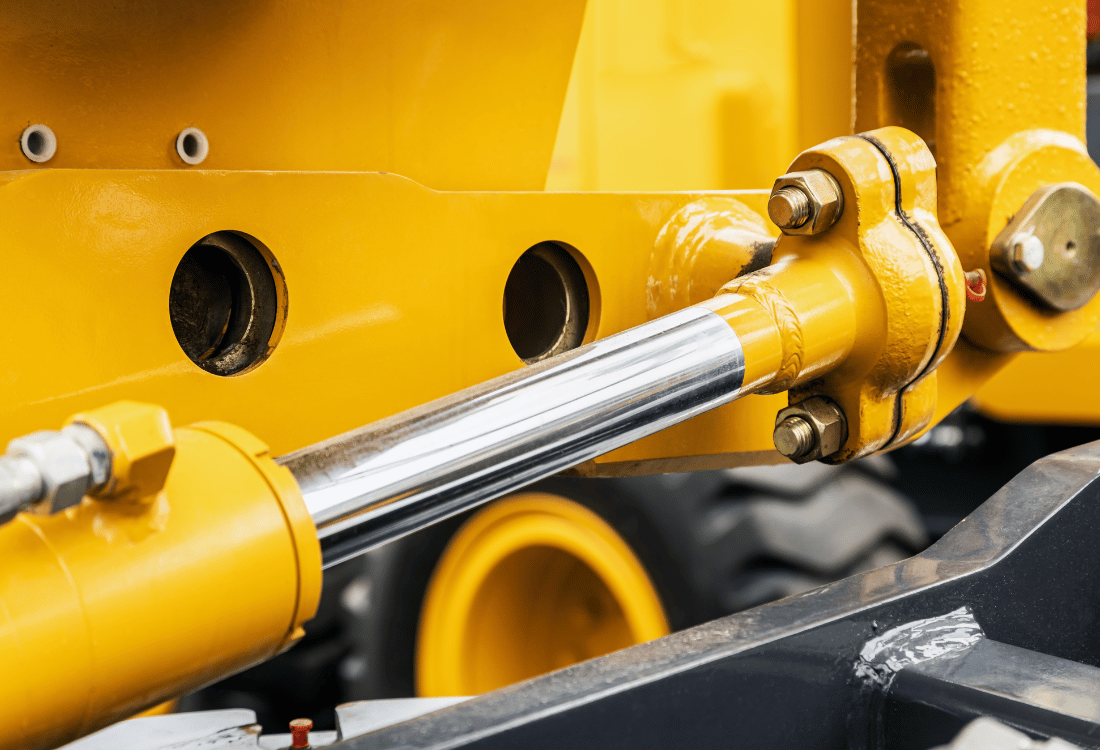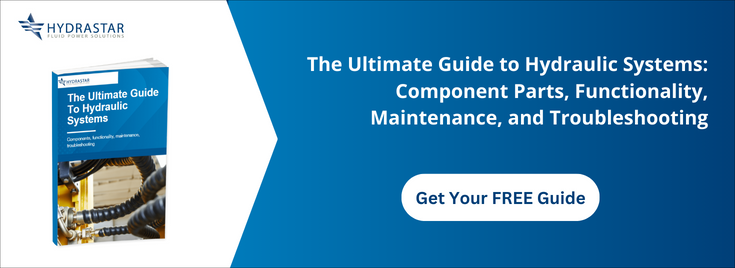When a critical fault develops within a hydraulic-powered system, the consequences can be dire, including unexpected downtime, loss of revenue, and safety hazards. Detecting issues at an early stage is the key to keeping your hydraulic application running smoothly and efficiently, but not all issues are of equal urgency. Some latent minor issues can wait till your next maintenance cycle, while others need immediate attention. It is these that we will look at in this article.

1. A Sudden Loss Of Power Or Efficiency
A sudden, unexpected drop in system performance, such as difficulty lifting a load within its safe working limits, noticeably slow operation, or failure to start at all, can indicate an underlying problem.
Solution: power down the system, and when safe, check for any pressure irregularities in your hydraulic pump. Power loss often stems from an internal leak, worn components, or contaminated hydraulic fluid. You should also inspect your hoses, fittings, and valves for obvious leaks or damage, and make sure the fluid level and quality meet the manufacturer’s recommendations.
2. Erratic Cylinder Movements
If a hydraulic cylinder is moving jerkily or inconsistently during operation, it may point to fluid contamination, air bubbles in the system, or piston seal failure. Unaddressed, these issues could trigger catastrophic failure and cause your application to shutdown.
Solution: inspect the cylinder rod and seals for any damage or contamination, then bleed air from the system to remove any air locks. You may also need to clean or replace any dirty filters to keep your hydraulic fluid clean.
3. Contaminated Hydraulic Fluid
Ideally, hydraulic fluid should be clear, with an odour and colour specified in the manufacturer’s instructions. Any variation from this norm could indicate contamination by water, dirt, or air. Cloudy or milky looking hydraulic fluid is an especially likely candidate for contamination.
Solution: contamination is a serious issue in hydraulic systems, so if you suspect contaminated fluid, we recommend that you drain the hydraulic reservoir immediately and replace with new, clean fluid. You should also flush the system to remove any residual impurities. The most common cause of contamination is a blocked or dirty filter, so regularly replace all filters to minimise this issue in future.
4. Vibrations Or Pulsations
Many hydraulic-powered machines vibrate at a base level, but you should take careful note of any excessive vibrations or pulsating movements, and anything that doesn’t ‘feel right’ compared to how your application normally operates. These can indicate loose components, irregular pressure waves, or a fault with your pump.
Solution: inspect all fasteners and mounting components to rule out looseness causing the vibrations. Then, check your hydraulic pump and motor for the correct alignment – many unusual vibrations arise from out of balance pump and motor systems. Use an accumulator, if required, to minimise system pulsation.
5. Alarms Or Error Codes
Finally, many hydraulic applications now include sensors that trigger alarms or specific diagnostic codes when system temperature, vibrations, and other parameters stray outside the normal range. An alarm of this kind shouldn’t be ignored, as it may indicate imminent component failure, even if there are no visible symptoms yet.
Solution: immediately check your error code or alarm type against your manufacturer’s diagnostic manual and follow the appropriate troubleshooting steps. If in doubt, or if the alarms persist, contact a manufacturer-qualified engineer for an expert opinion.
What next?
Get in touch with Hydrastar today if you’d like to find out more about system maintenance and how to maximise efficiency in your fluid power applications.
Image Source: Canva


